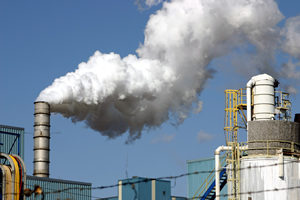The meaning of externalities

Defining ExternalitiesExternalities are costs (negative externalities) or benefits (positive externalities), which are not reflected in free market prices. They are effects not on the producer or consumer (these are private costs and benefits) but have some effect on people not involved in the market. Externalities are sometimes referred to as 'by-products', 'spillover effects', 'neighbourhood effects' 'third-party effects' or 'side-effects'. |
In a given market there are producers
(first parties) and consumers
(second parties) but their actions in making transactions sometimes
affect others (third parties). The main point about this is that
generally producers make decisions on how much to produce based on
their own benefits (Profits usually) and consumers make decisions on
how much to consume based on the benefit to themselves only, neither
party taking into account their effects on third parties. Therefore the
market equilibrium (and consequent allocation of resources) is not
equal to what society as a whole would want it to be (ie maximising
community surplus) in other words the market equilibrium is not at the social optimum.
Free Market economists such as Milton Friedman and the Austrian School have argued that externalities particularly arise because of the absence of markets - as no markets exist for such things as clean air and seas, beautiful views or tranquillity, economic agents are not obliged to take them into account when formulating their production and consumption decisions, which are based on private costs and benefits i.e. those which are internal to themselves.
Another way of putting this is to say individuals have no private property rights over such resources as the air, sea and rivers, and thus ignore them in making their production and consumption decisions.
Property rights refer to those laws and rules that establish rights relating to:
- ownership of property;
- access to property;
- protection of property ownership;
- the transfer of property.
Thus a firm may feel free to dump
effluent into a river as the spoiling of the environment and the
killing of fish is not a cost that it would directly have to bear
(think The Marginal´s Rio Teite). Similarly for consumption
externalities like smoking. The solution therefore is to sell property
rights to interseted parties so they have an incentive to look after
the `property´they own - Or sell the right to pollute and the fee could
cover the cleaning up of the solution etc. Therefore there is a market
solution which is more efficient than solutions suggested by
Interventionists.
Those on the political left (Interventionists) such as Paul Krugman would be more likely to argue that such an externality would arise because the market system is not regulated and therefore there is a role for government to intrevene to solve problems caused by market failure and to ensure the optimal allocation of resources.
